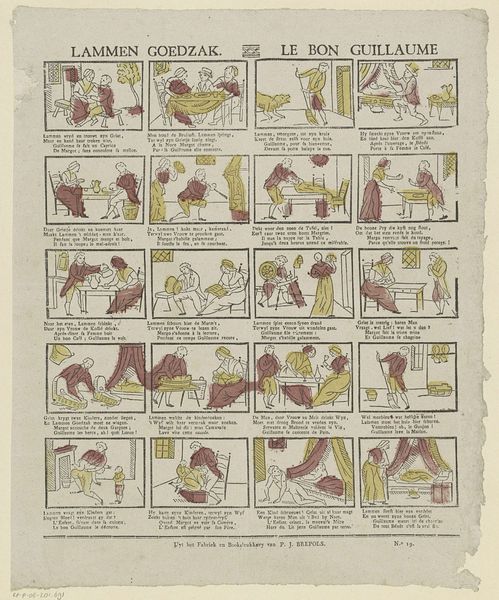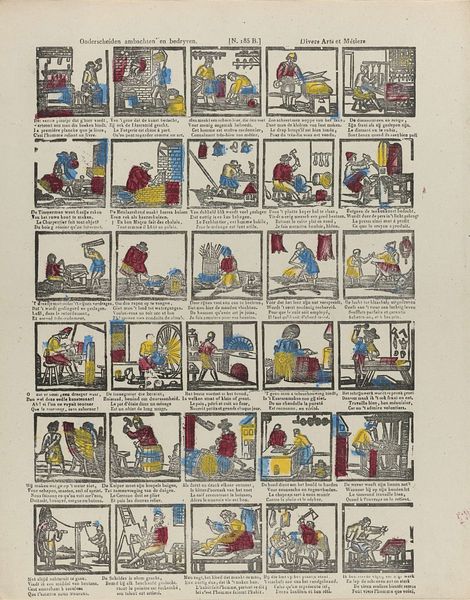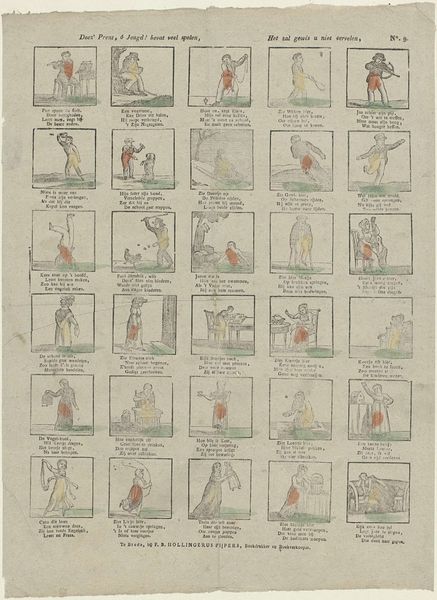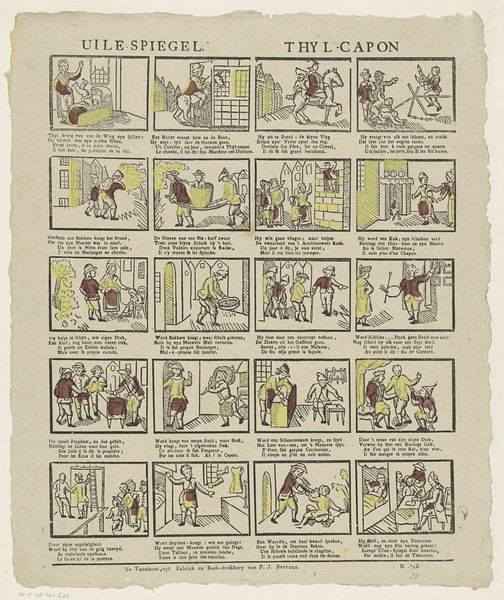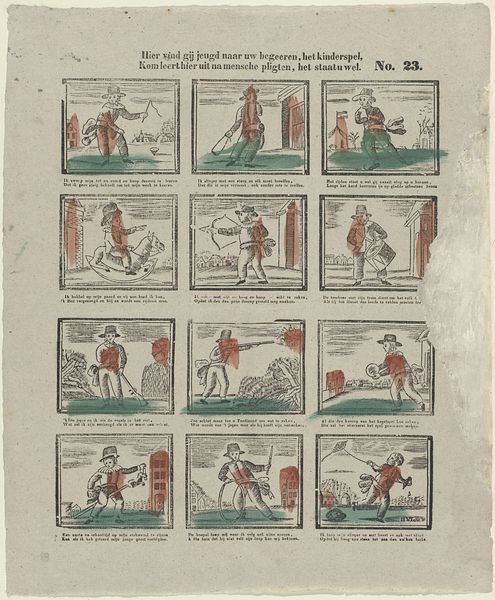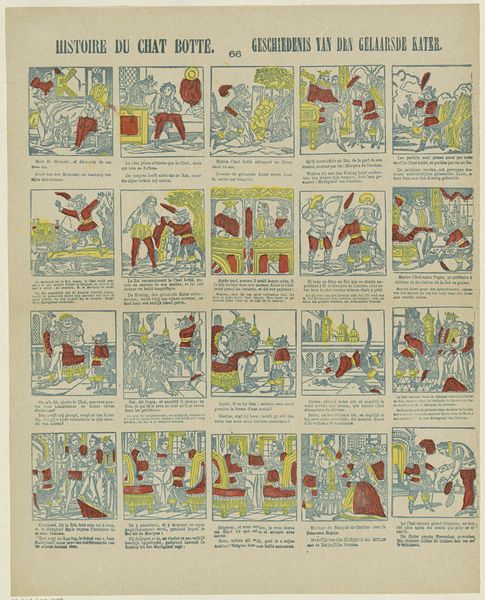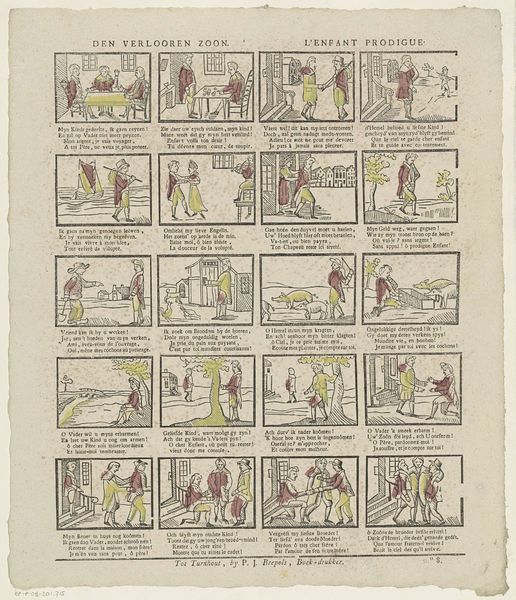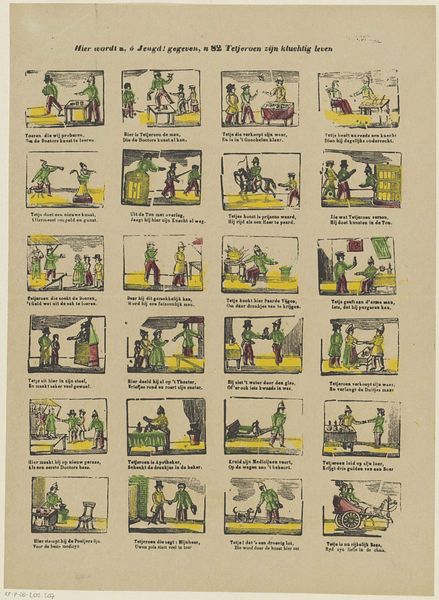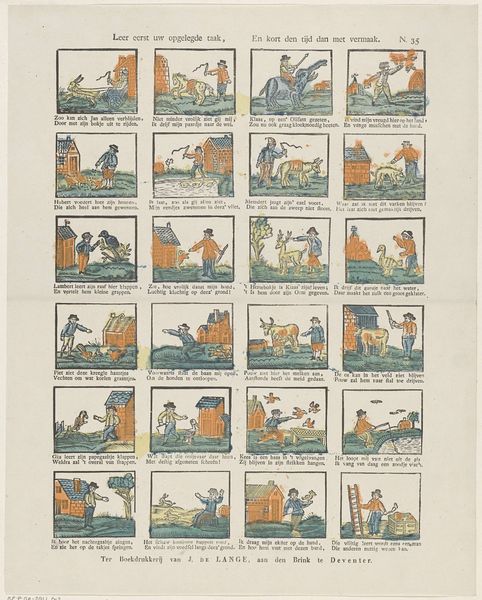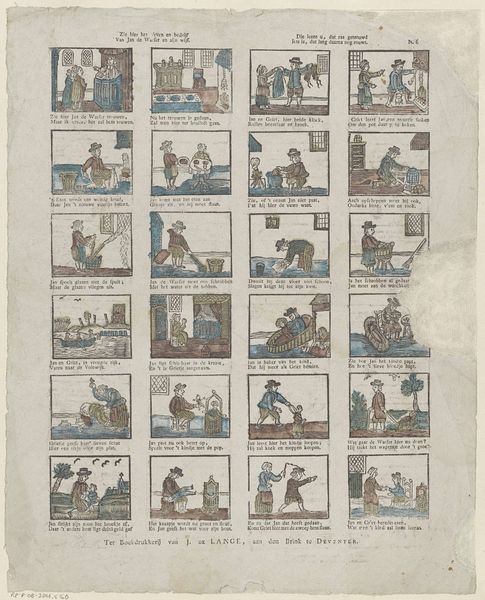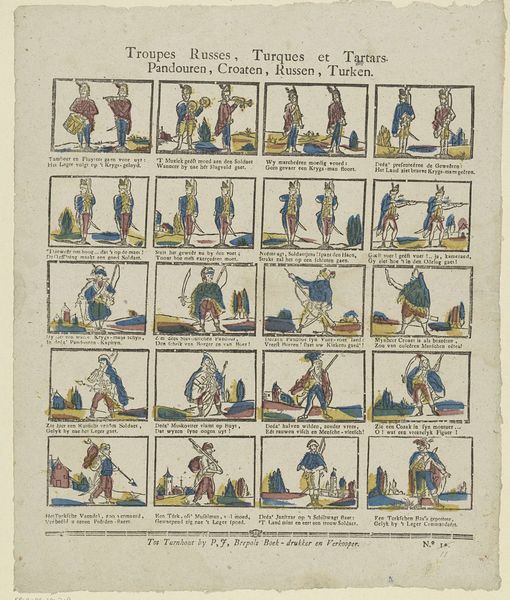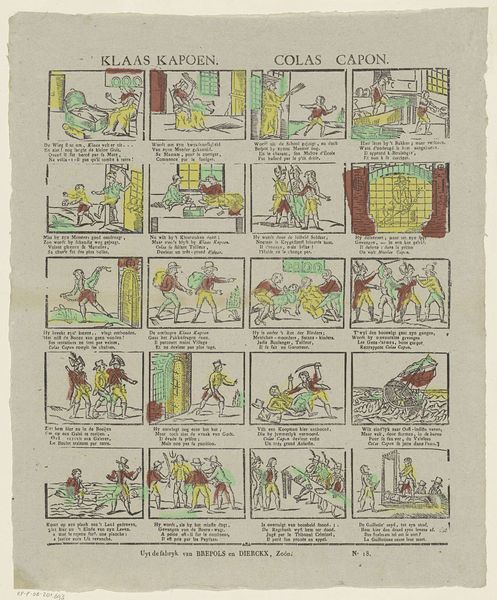
Gij vind hier jeugd tot uwe leering of tot vermaak, / een vierentwintigtal figuren een ieder bezig in zijn zaak 1832 - 1850
0:00
0:00
graphic-art, print
#
graphic-art
#
narrative-art
# print
#
figuration
#
comic
#
genre-painting
Dimensions: height 403 mm, width 332 mm
Copyright: Rijks Museum: Open Domain
Curator: This graphic print, made between 1832 and 1850 by Theodorus Johannes Wijnhoven-Hendriksen, is titled "Gij vind hier jeugd tot uwe leering of tot vermaak, / een vierentwintigtal figuren een ieder bezig in zijn zaak." It feels almost like an early form of comic strip, with these little vignettes of everyday life. How do you read the imagery presented here? Editor: Well, it strikes me as quite ordered, but a little busy. I’m curious about the children depicted in each panel, and why their activities were chosen. It also feels like the message or moral is very old-fashioned! How would you interpret this work, knowing it comes from that period? Curator: Absolutely. Consider this as a didactic tool, intended to educate and moralize the youth of the time. Each scene, depicting children engaged in various activities, subtly reinforces societal expectations and norms. We see themes of labour, learning, and social interaction, all framed within a specific moral code. It invites us to consider the limitations placed on these children. Are these playful scenarios, or do they hint at a form of forced socialization and labor? Editor: So, in other words, it's not just a quaint depiction of childhood, but also a reflection of the social structures and pressures of the time? I'm also trying to relate this print with gender roles and labor…were there also similar depictions of young girls in similar poses, in this time frame? Curator: Exactly. What is included, and what's omitted is key. Looking closely at this print, consider who it’s *for*. Whose behaviours are deemed acceptable, even encouraged and reinforced here. Didactic prints of the time were overwhelmingly produced and consumed within patriarchal societal systems; how did these reinforce such models? Who were considered important consumers, then? Editor: That definitely adds a layer of complexity I hadn't considered. Now I’m seeing the potential for this work to not only educate but also enforce very rigid societal boundaries, which is kind of unsettling. Thanks! Curator: It's through this lens, questioning these assumptions, that we truly begin to engage with the work and the systems it supported. And, to your point, more comparative analysis on the representation of gender roles would greatly help understand more perspectives about it!
Comments
No comments
Be the first to comment and join the conversation on the ultimate creative platform.

